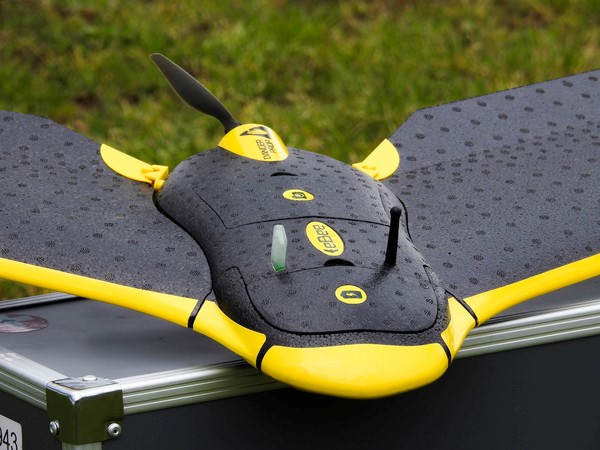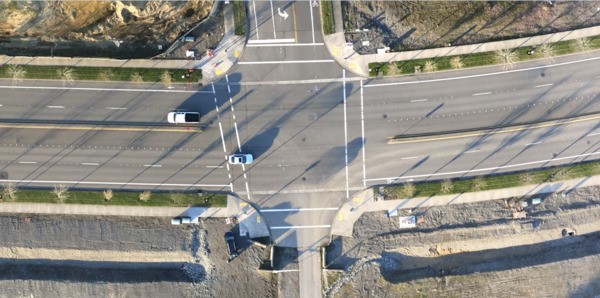
Recent volatility around oil prices has sent our gas clients on a frantic scramble to do more with less. The impacts are far reaching and the result is rapid change. Fortunately, new technologies are available that are shortening survey, design, and construction delivery times and dramatically decreasing costs.
One such technology is the use of drones or unmanned aerial vehicles (UAVs) to collect topographic survey information, aerial photography, vegetation imagery, and construction inspection video and documentation. UAVs represent what may be the single biggest enabling technology in decades.
The beneficial impacts of this technology within the gas construction industry are significant and include:
Cost Effective and Efficient
In our experience, gas companies often approach design in a very low cost way. Our clients in this industry often work from GIS maps (for topo) with the expectation that design changes will occur frequently in the field. The justification being that the costs resulting from field changes are usually less than the costs for tighter design and field documentation.
UAV-based survey dramatically lowers the costs of field mapping, allowing the capture of topographic data at a price-point that better fits the gas industry’s design approach and avoiding the pitfalls of a questionable design base.
Dramatically Improves Design
A drone based pre-design survey gives the gas professional a tool that will greatly improve the way design and construction is implemented. As one example, the aerial photography captured with a survey-grade drone augments traditional survey by capturing high-definition documentation of underground locates (paint markings). There will be no question about which utilities did adequate locates if a photographic record is captured prior to construction. A clear record of potential conflicts will decrease costs during construction and documents the efficacy of utility and agency locates.

Creates a Solid Pre-Construction Record
High-definition aerial photography also creates an accurate record of pre-construction site conditions, which protects you from property owner claims due to construction disturbance. You will also have a solid record to ensure contractors fulfill their site restoration responsibilities and that they respect private property and other limits.
Decreases Risk of Some Inspection Duties
Video-based drone footage is also changing the way some high-risk inspections are being completed. For example, gas lines hung from bridge structures can be evaluated from a distance without the use of time-consuming, costly, and risky fall protection and/or temporary structures. Besides decreasing costs, this also increases the timeliness of important inspection data. Likewise, construction work within busy roadways and/or around rail can be either surveyed or inspected (in some cases) from a distance, clear of hazards.
UAVs provide significant benefits to the gas industry, but there are some realities you should be aware of before considering the use of this technology.
Technology Limitations
The application of this technology does have limitations. Large canopy trees and dense vegetation can limit the use of drones for survey-grade mapping. For these reasons, some sites may not be candidates for the use of UAVs or there may be a need to augment a survey with more traditional methods.
Perceptions
There are also perception issues that may need to be addressed. Even when flying within FAA guidelines, privacy and nuisance concerns (typically jurisdiction of a State) can be an obstacle. In these cases, a thoughtful information campaign and / or proper notice is necessary. In particular, federal lands and lands regulated for the purposes of national security require additional notices and approval.
In spite of these hurdles and limitations, we’re already seeing an increased reliance on the use of drones for survey, design, and construction. For the gas industry, the benefits are significant: decreased costs, increased design quality, and lowered risks. I’m guessing that’s a combination that will appeal to just about everyone.
Are you considering using drones on a project? I’d like to learn about the factors driving your decision. And if you already use UAVs, please let me know the benefits and drawbacks you’ve experienced.

